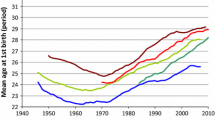Abstract
This paper explores the inducement of fertility change in situations where actual fertility levels do not coincide with socially optimal fertility levels. The motivating example is that of higher than socially optimal levels of fertility in LDCs, but the approach is equally applicable to contexts of lower than socially optimal levels of fertility in DCs. The paper proposes a prisoner's dilemma characterization of higher than socially optimal levels of fertility in LDCs and offers a resolution of the dilemma, and hence a possible route to fertility-reduction policies, through the generation of mutual altruism. The prisoner's dilemma characterization hinges on the assumption that there is some social sharing of the costs associated with a given level of fertility but less or none with respect to the benefits. The mutual altruism solution depends on representing an agent's preferences as a specific convex combination of his/her and the other agent's original utilities. The unique critical level of such altruism is identified and hence a stopping rule is provided. Several examples from the array of extensions and possible implications of this approach are discussed briefly.
Résumé
Cet article étudie les possibilités d'infléchissement de la fécondité dans des situations où les niveaux de fécondité ne correspondent pas à l'idéal social. L'auteur a été motivé par le cas des pays en développment où les niveaux de fécondité sont supérieurs à l'idéal social, mais l'approche s'applique aussi bien au cas inverse qui est celui des pays développés. L'article suggère de représenter dans les termes du ‘dilemme du prisonnier’ les niveaux de fécondité supérieurs à l'idéal social des pays en développement, et propose, comme solution du dilemme — et, partant, comme voie possible vers des politiques de réduction de la fécondité — l'instauration d'une réciprocité altruiste. Le recours au ‘dilemme du prisonnier’ repose sur l'hypothèse qu'il y a un certain partage social des coûts associés à un niveau donné de fécondité, mais qu'il y en a moins, voire pas du tout, en ce qui concerne les bénéfices. La solution de la réciprocité altruiste requiert qu'on représente les préférences d'un agent comme une combinaison convexe particulière de ses propres besoins primordiaux et de ceux de l'autre agent. Le niveau critique spécifique de cet altruisme étant déterminé, on en déduit un dispositif d'arrêt. Plusieurs exemples parmi l'éventail des extensions et implications possibles de cette approche sont examinés brièvement.
Similar content being viewed by others
References
Akerlof, G.A., 1983, Loyalty filters, American Economic Review 73, 54–63.
Aumann, R.J., 1959, Acceptable points in general cooperativen-person games, Annals of Mathematics Studies 40, 287–324.
Aumann, R.J., 1981, Survey of repeated games, Essays in Game Theory (Wissenschaftsverlag, Mannheim).
Axelrod, R., 1984, The evolution of cooperation (Basic Books, New York)
Axelrod, R. and D. Hamilton, 1981, The evolution of cooperation, Science 211, 1390–1396.
Buchanan, J.M., 1977, Freedom in constitutional contract (Texas A&M University Press, College Station, TX).
Caldwell, J.C., 1982, Theory of fertility decline (Academic Press, London and New York).
Hardin, G., 1968, The tragedy of the commons, Science 162, 1243–1248.
McIntosh, A.C., 1983, Population policy in Western Europe (M.E. Sharpe, Armonk).
Neher, P.A., 1971, Peasants, procreation and pensions, American Economic Review 61, 380–389.
Simon, H.A., 1983, Reason in human affairs (Stanford University Press, Stanford, CA).
Willis, R.J., 1978, Intergenerational relations, population growth and welfare: Toward a theory of the role of the family in economic development (Department of Economics, State University of New York, Stony Brook, NY) Mimeo.
Author information
Authors and Affiliations
Additional information
Acknowledgements: I have benefitted from the advice and comments of Robert J. Aumann, Ansley Coale, Robert E.B. Lucas, Hilary Page, John H. Pollard, Joseph Potter, and George J. Stolnitz.
Rights and permissions
About this article
Cite this article
Stark, O. Inducing fertility change. Eur J Population 2, 31–42 (1986). https://doi.org/10.1007/BF01796879
Received:
Revised:
Issue Date:
DOI: https://doi.org/10.1007/BF01796879




